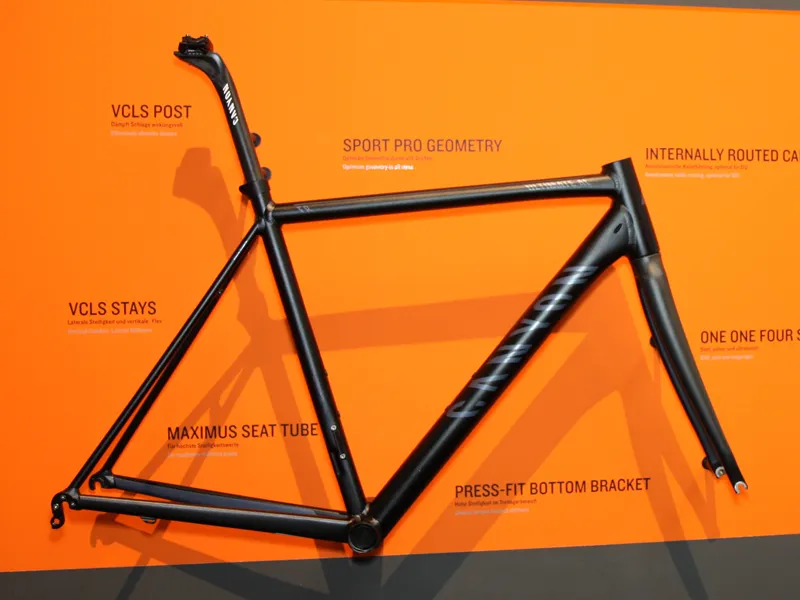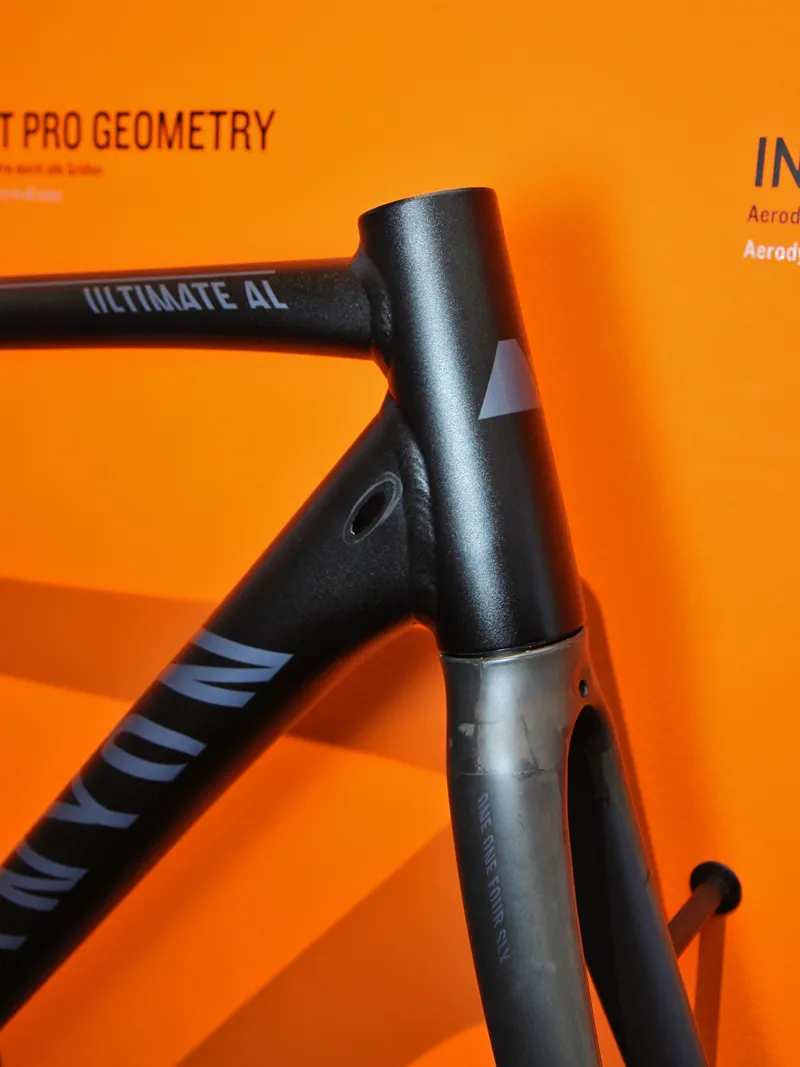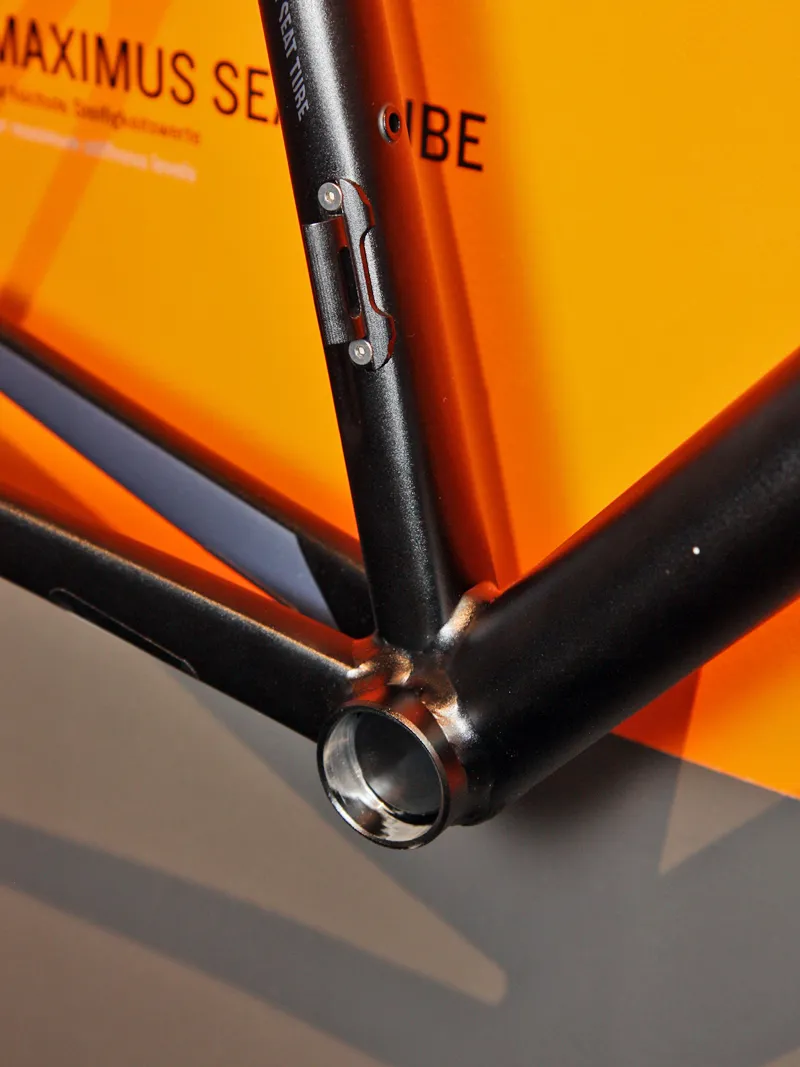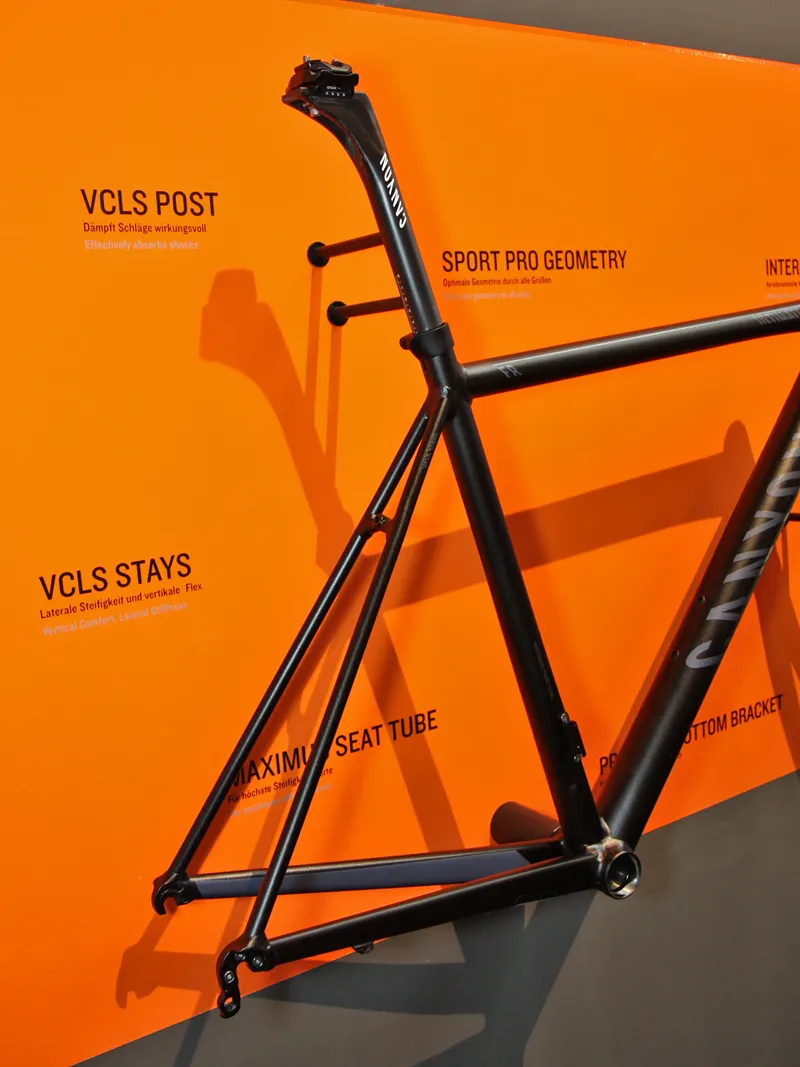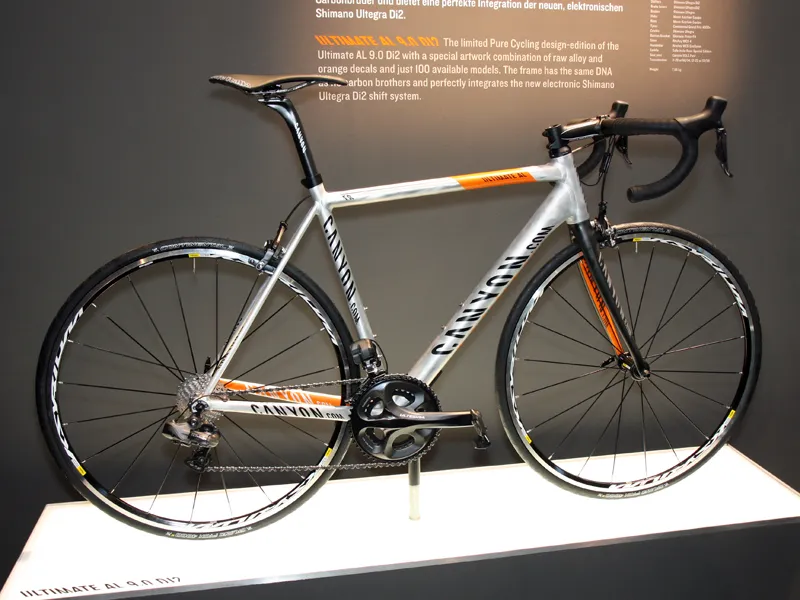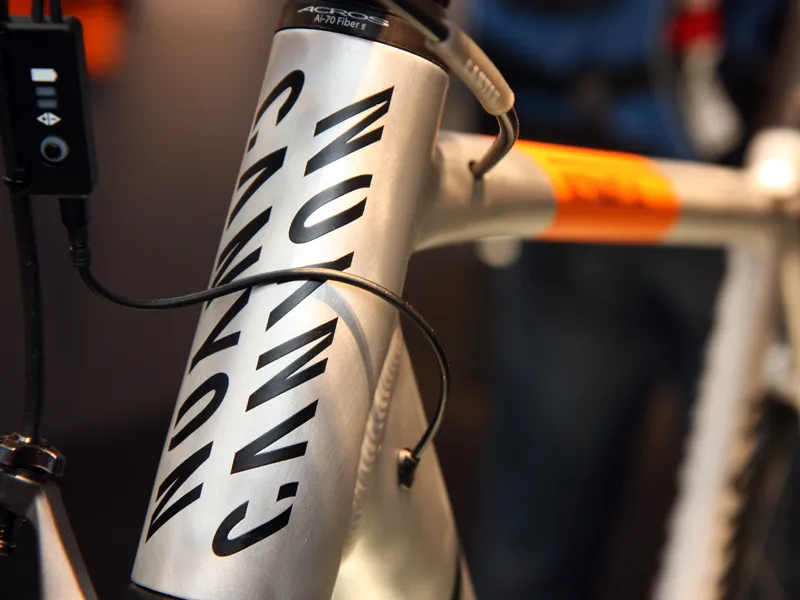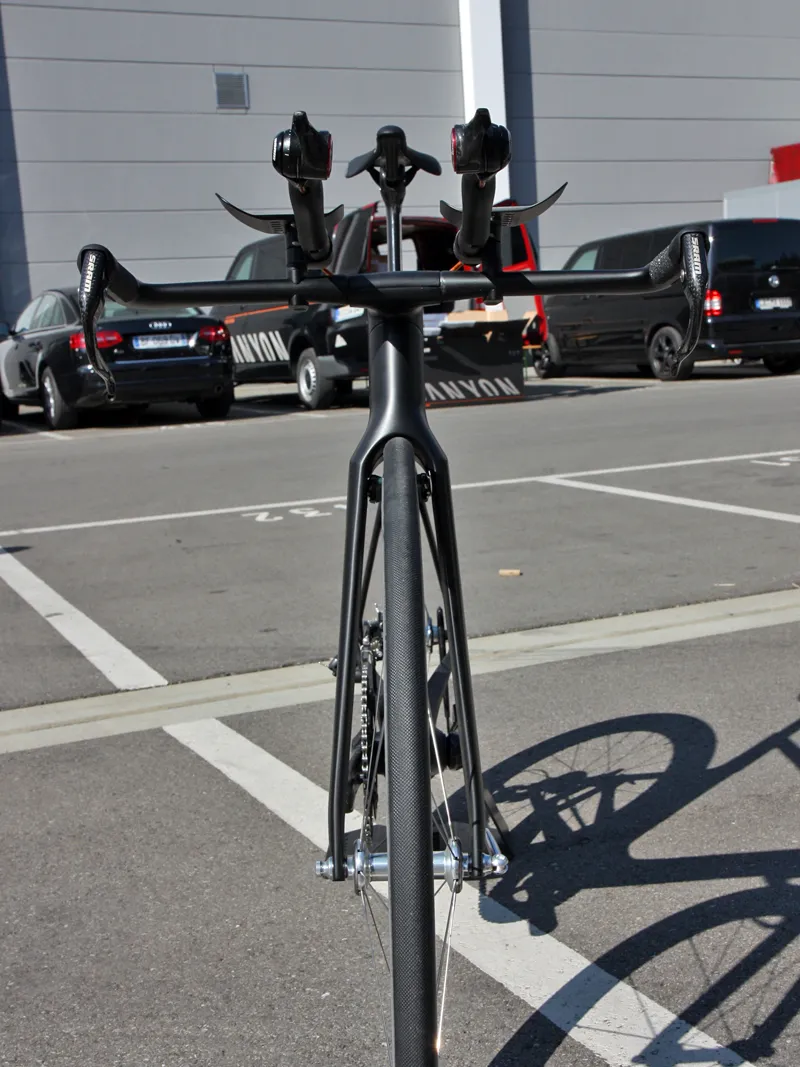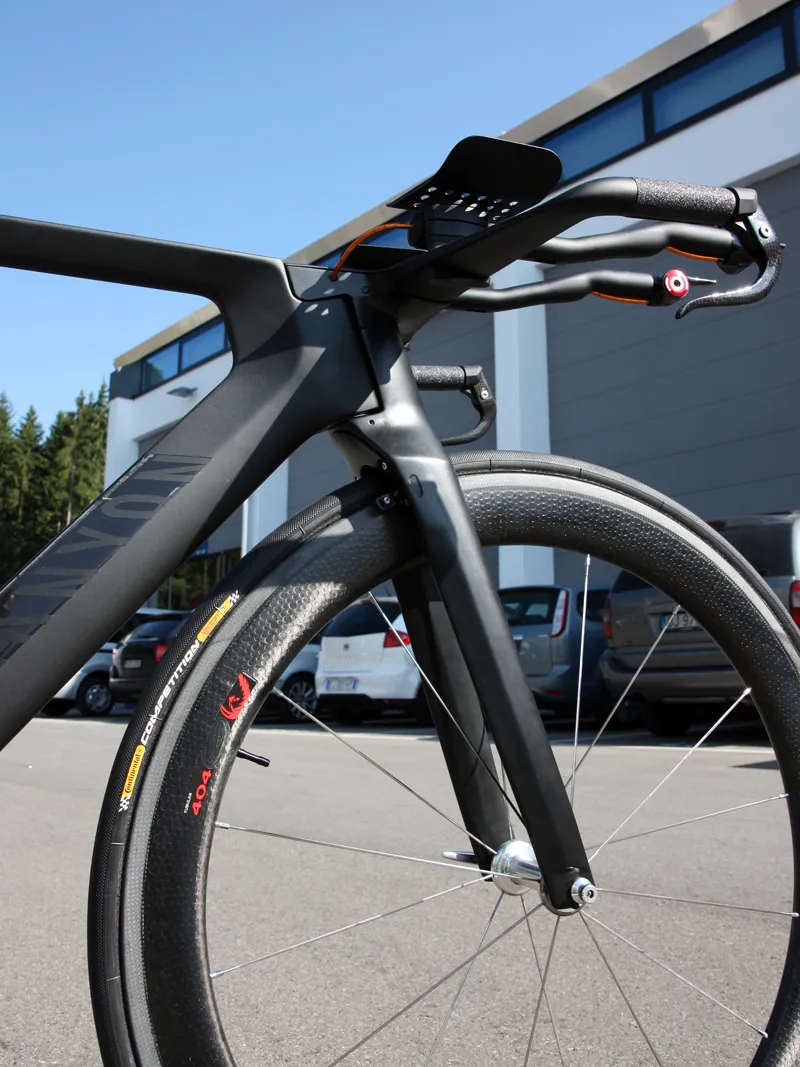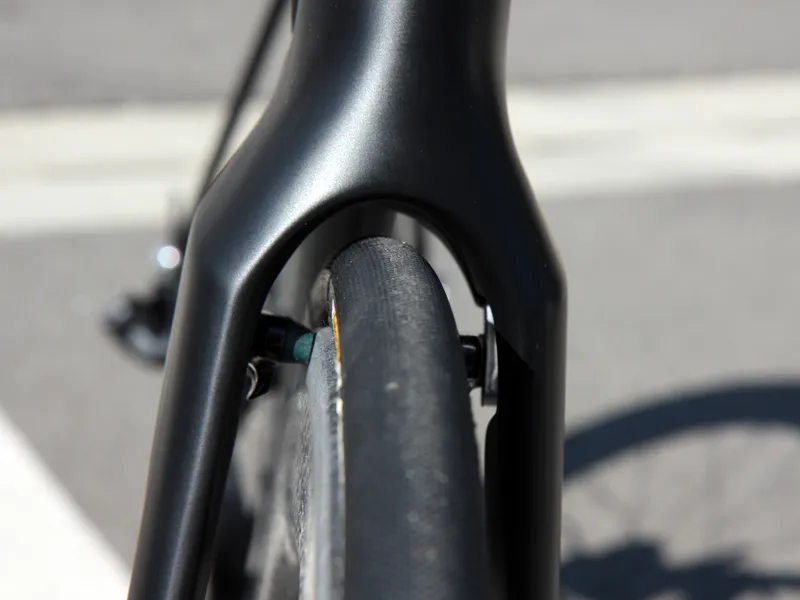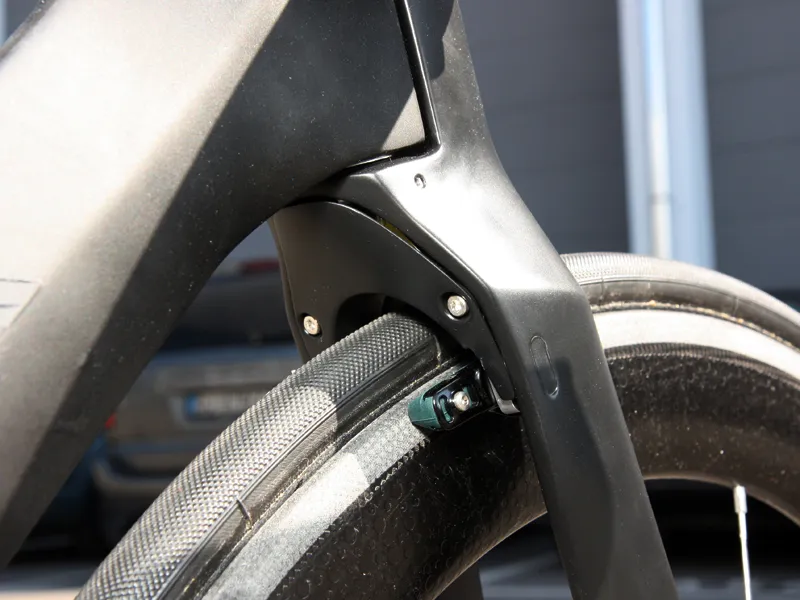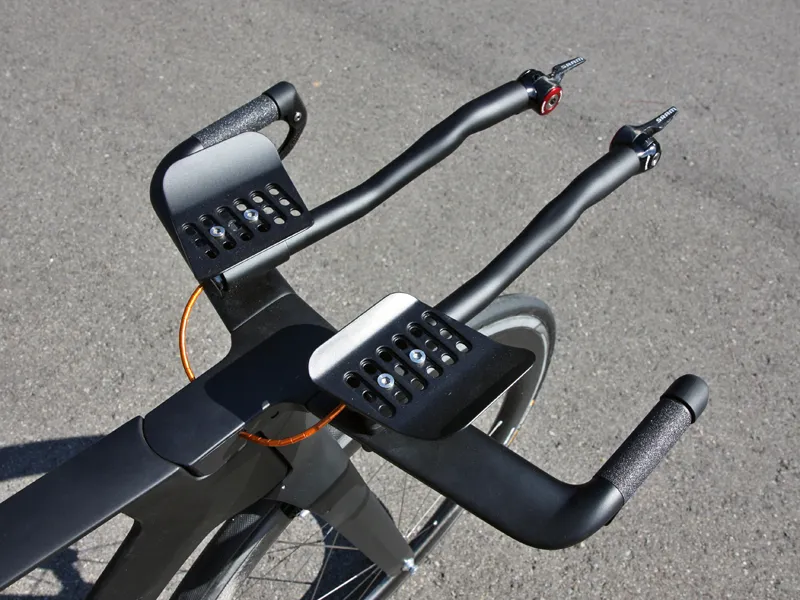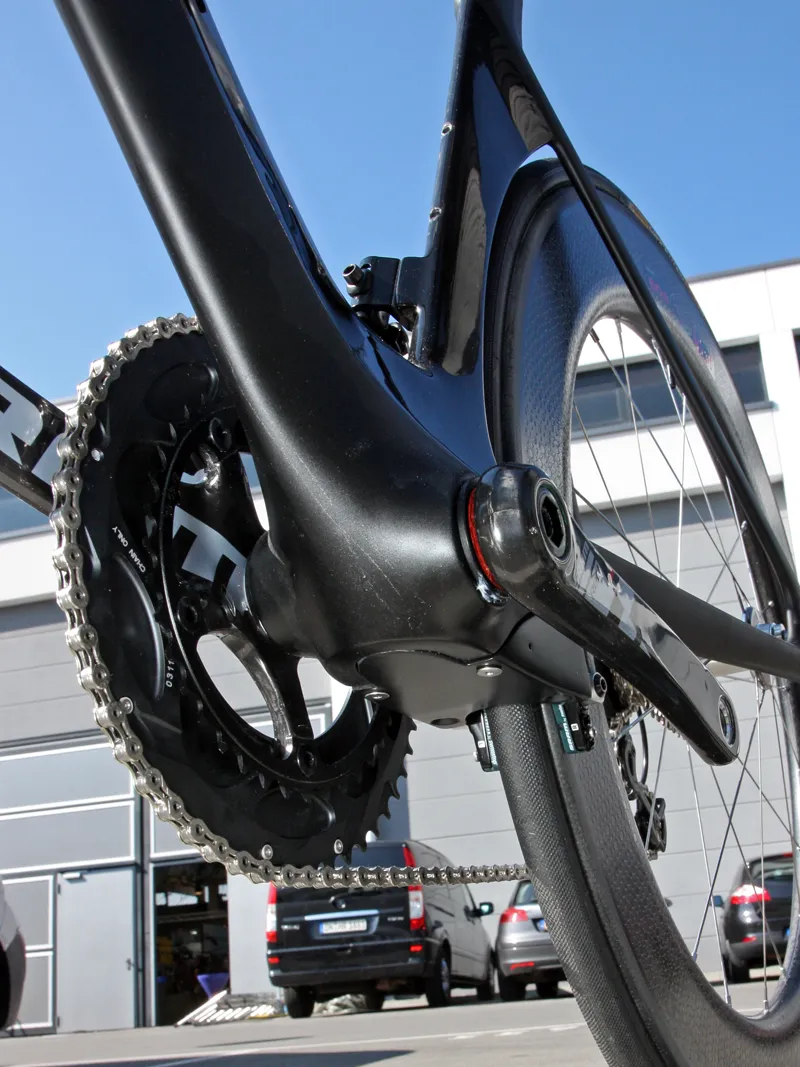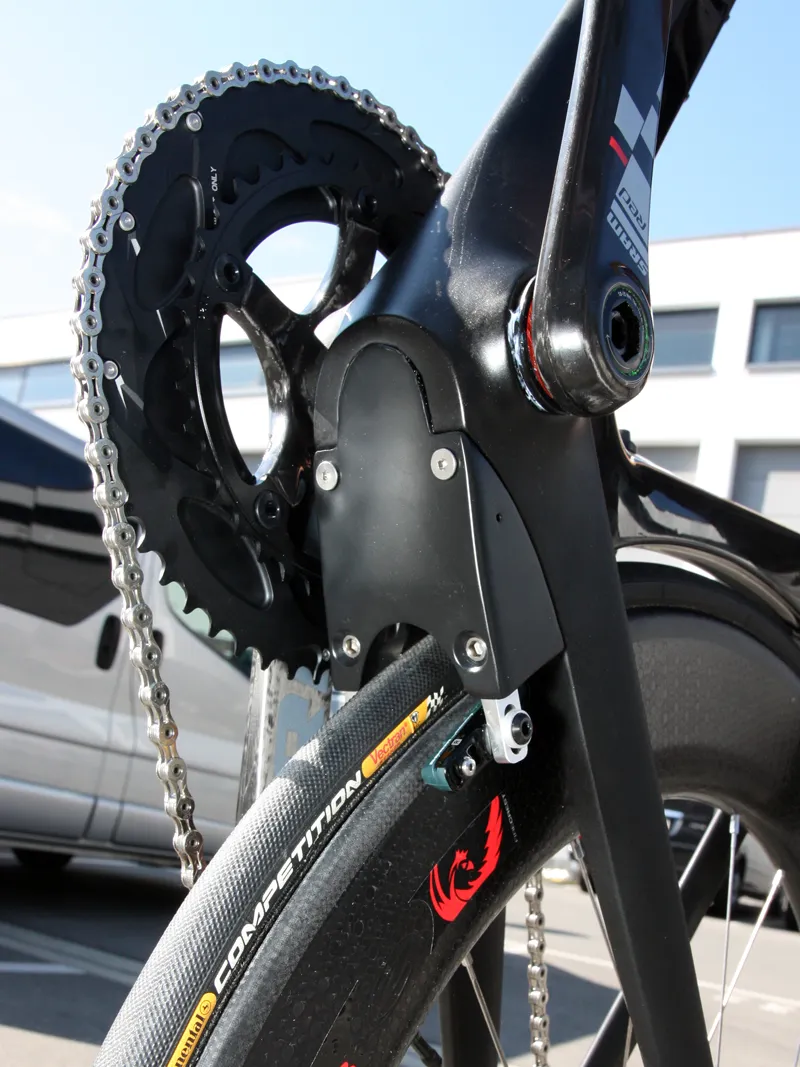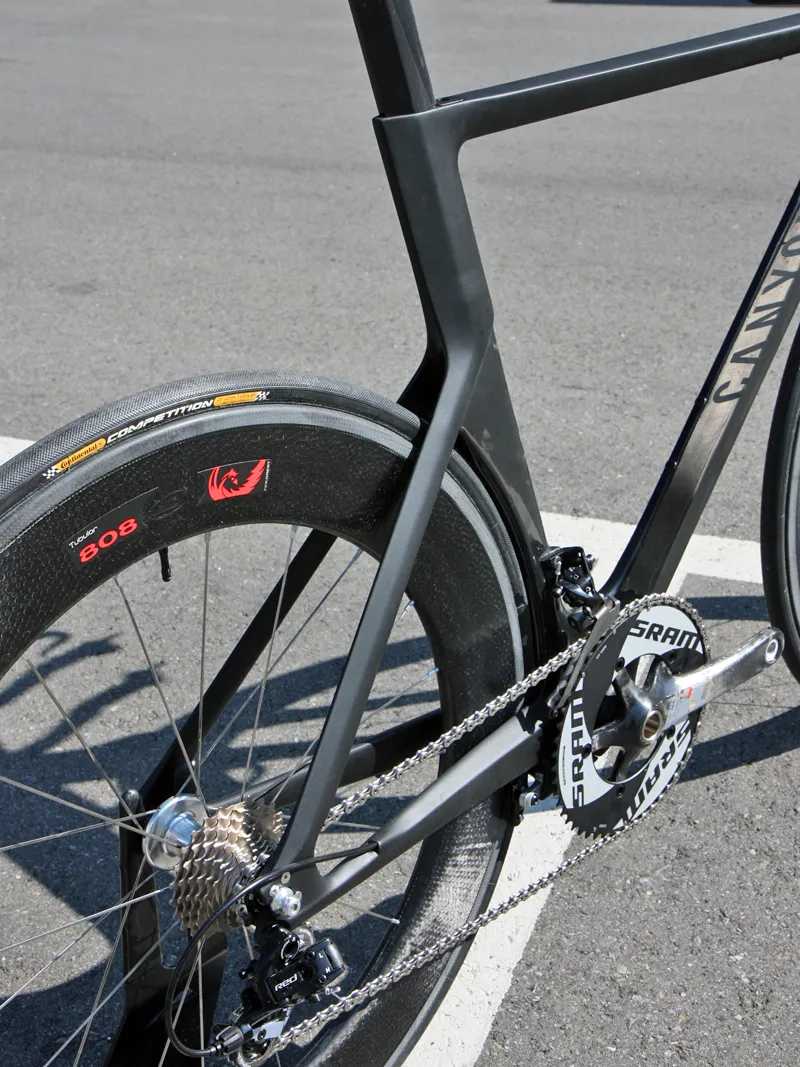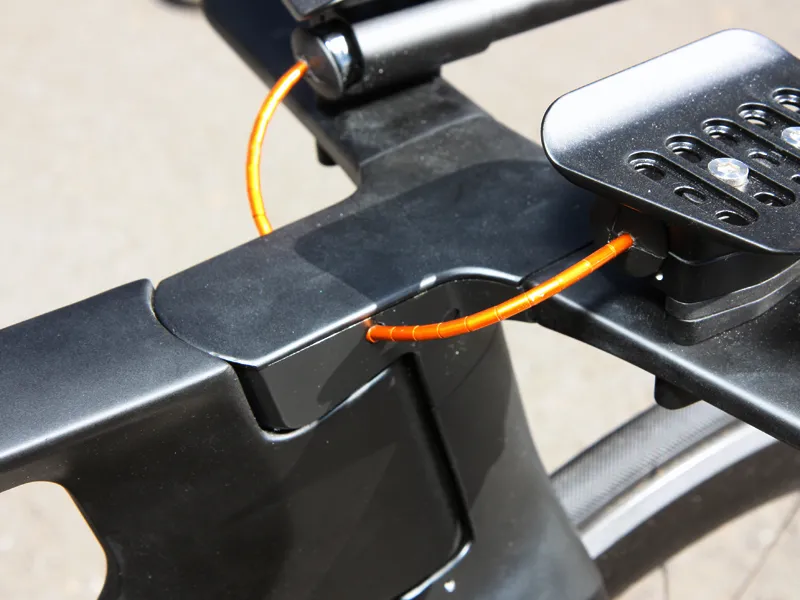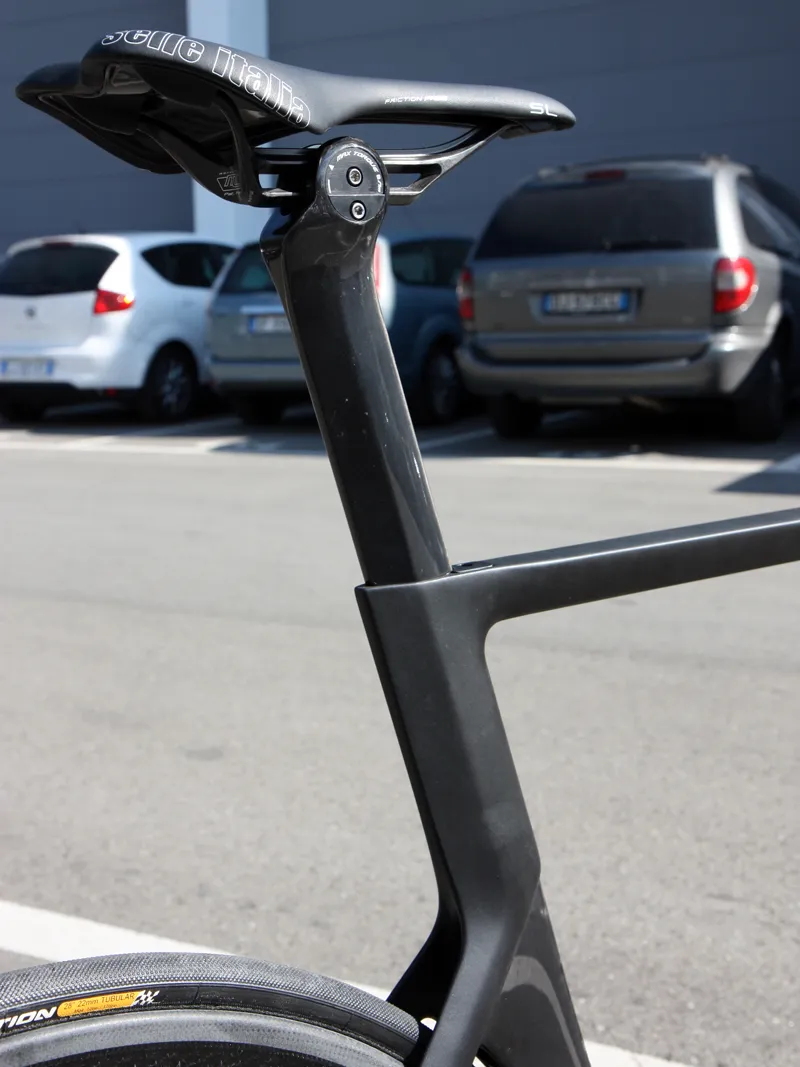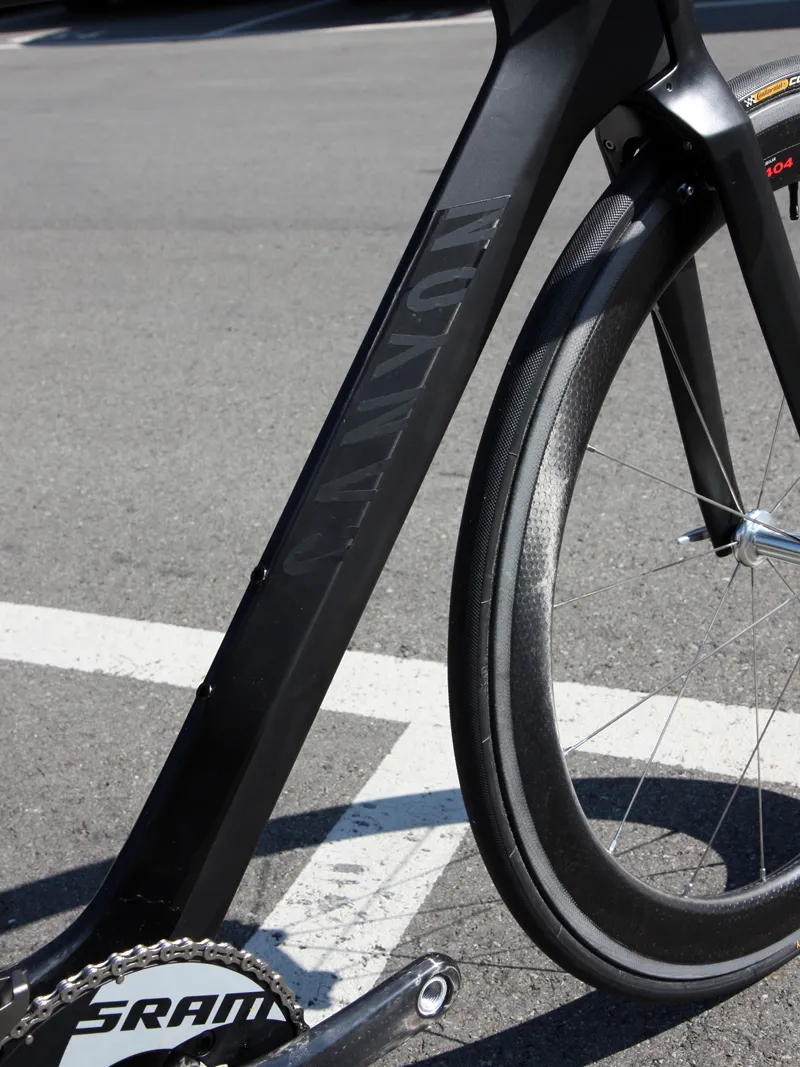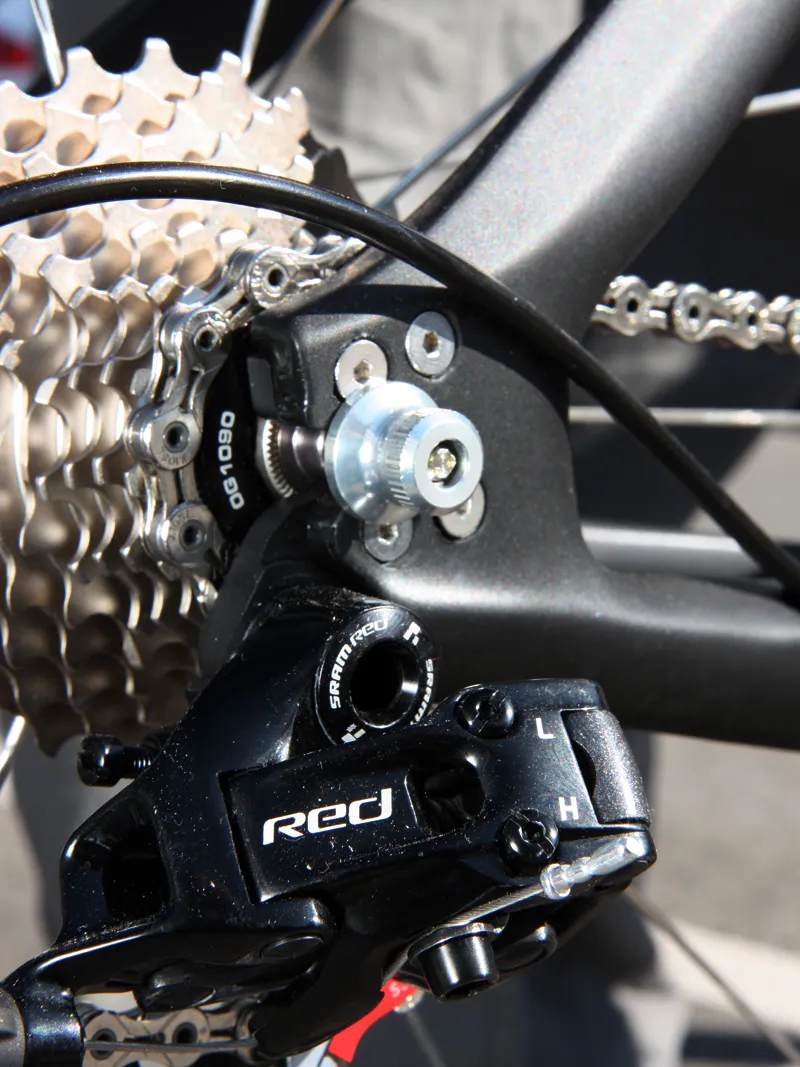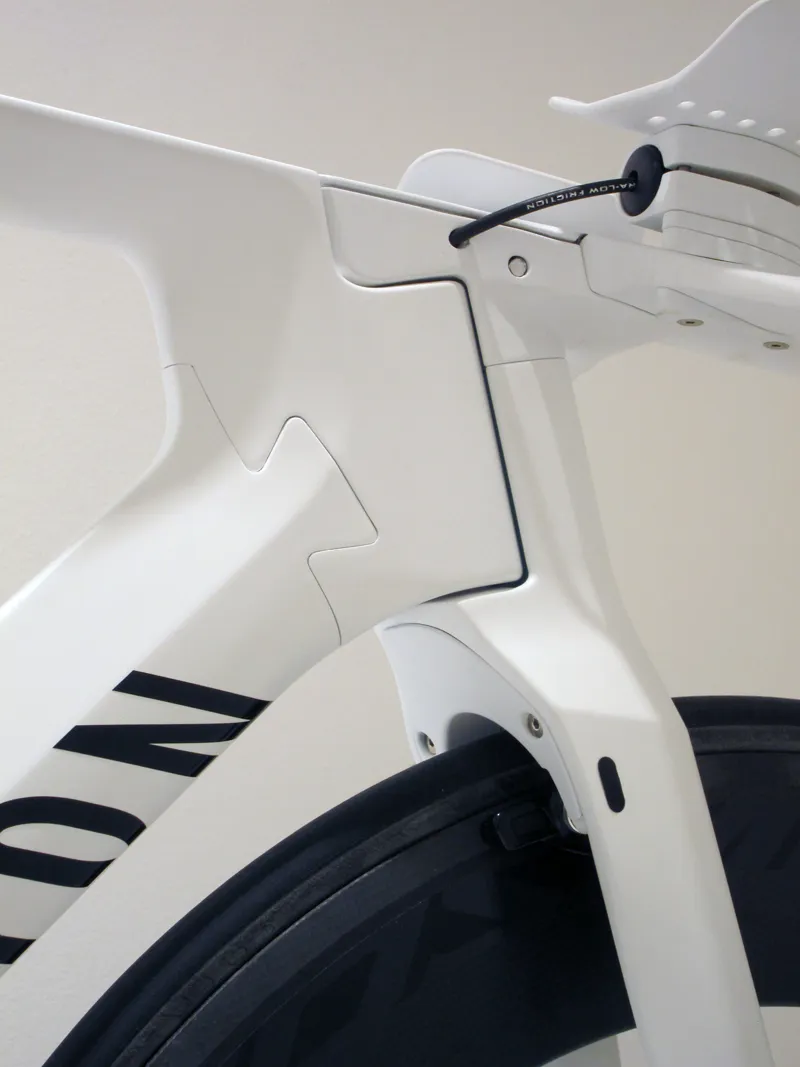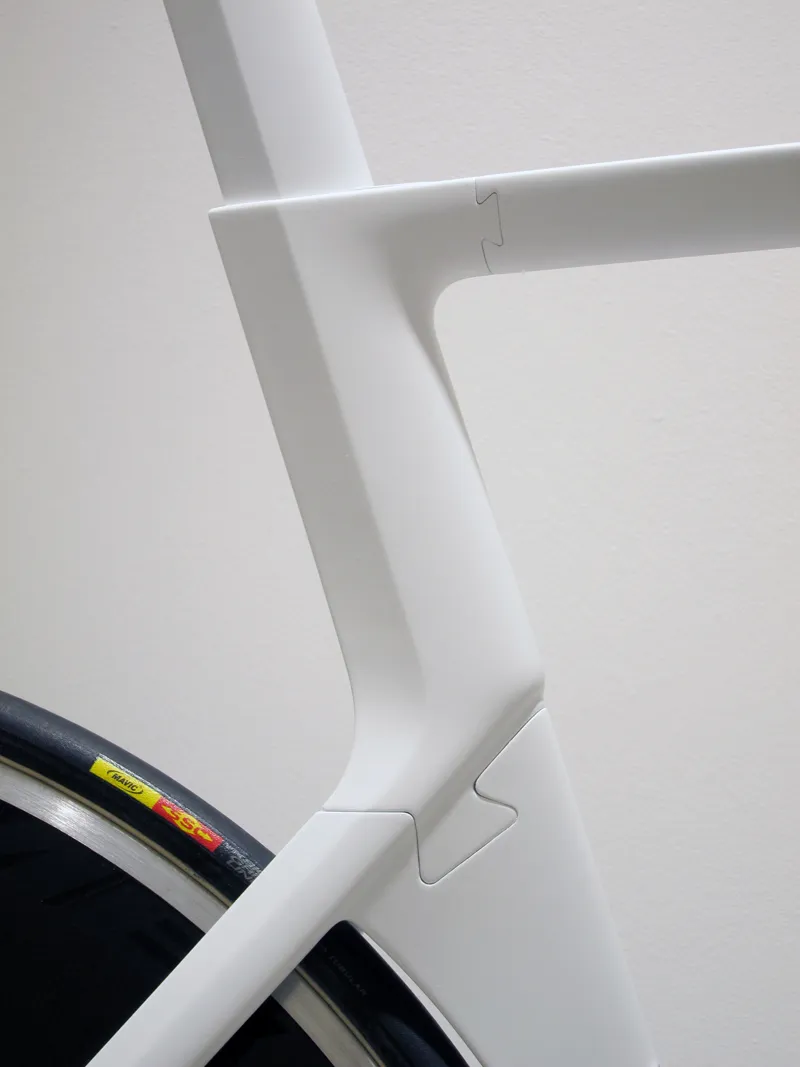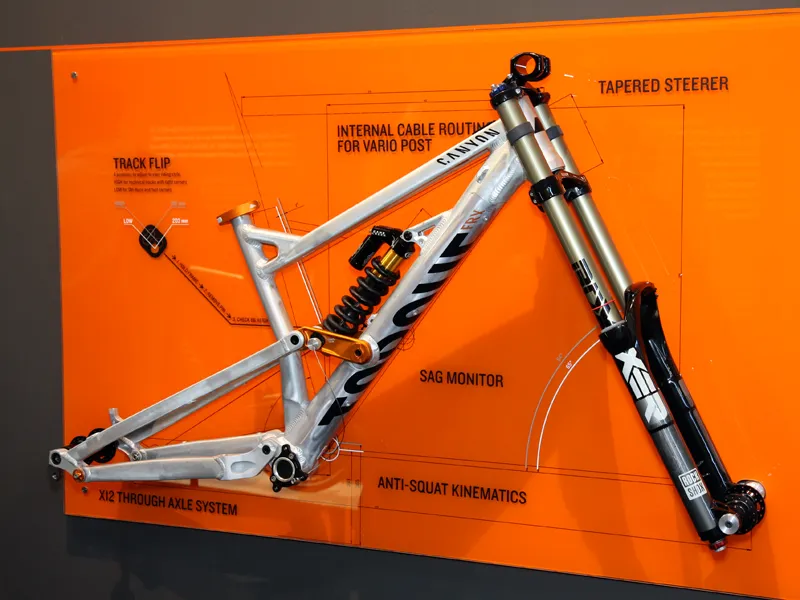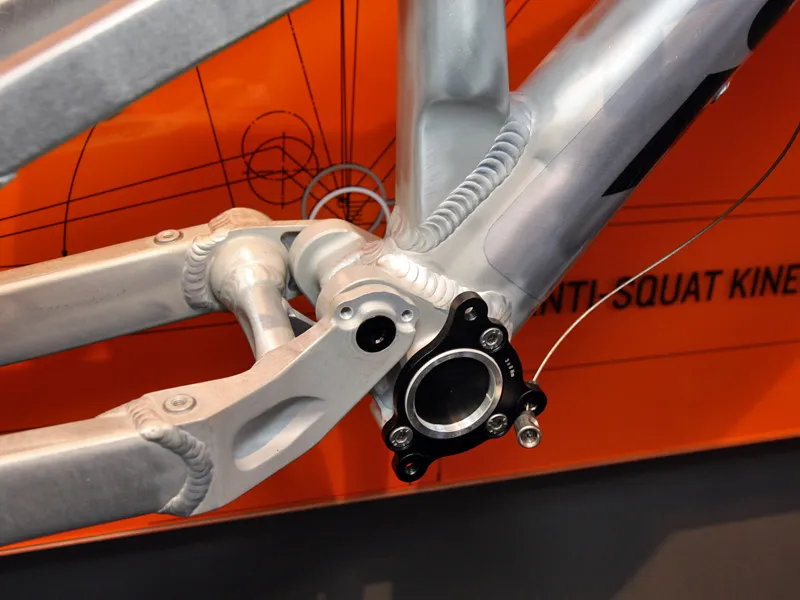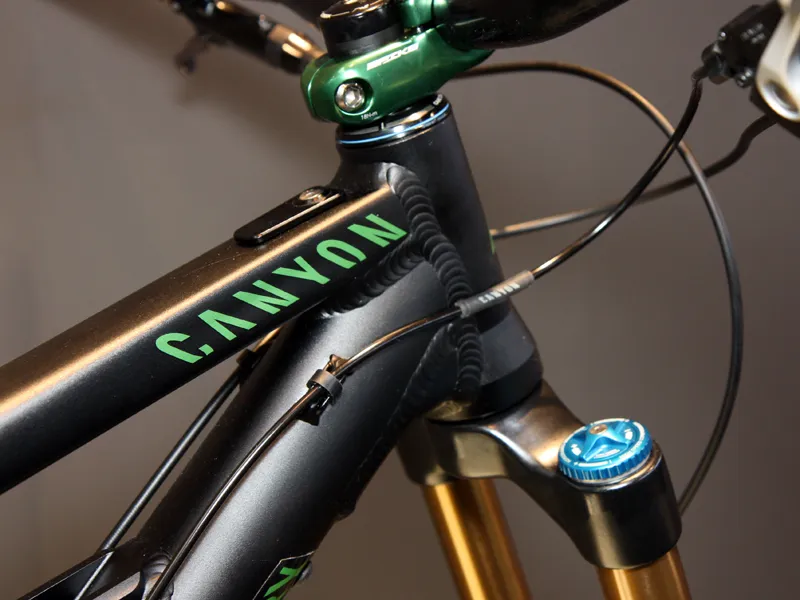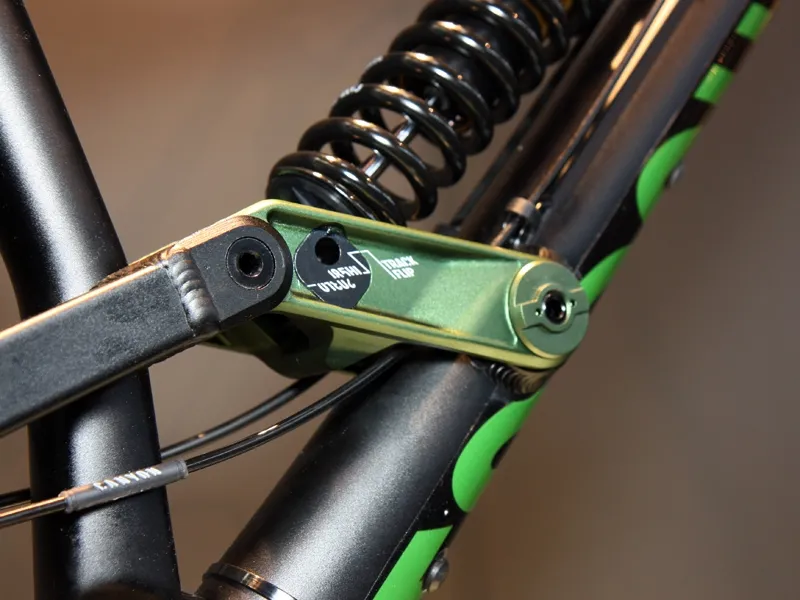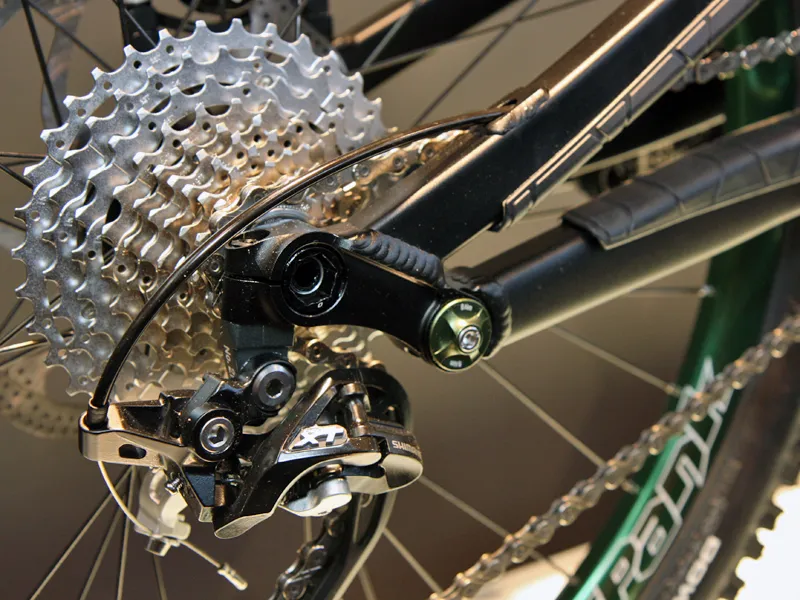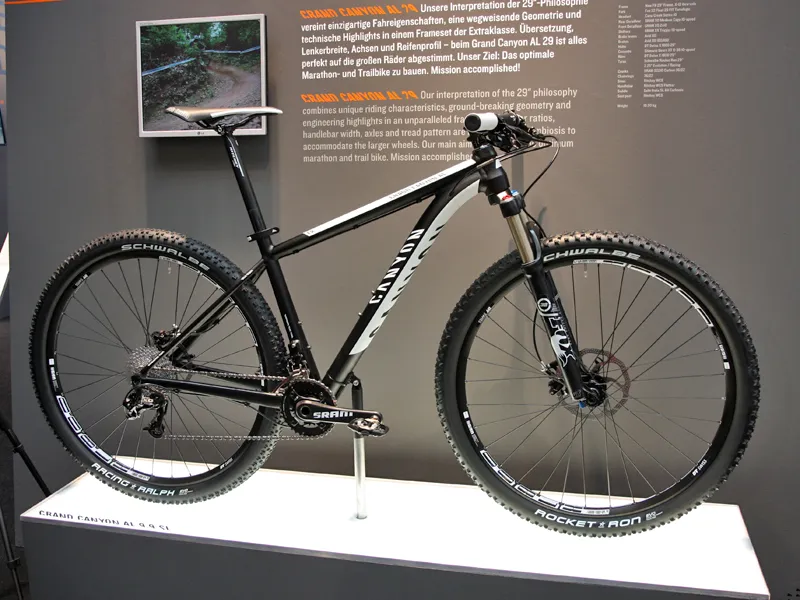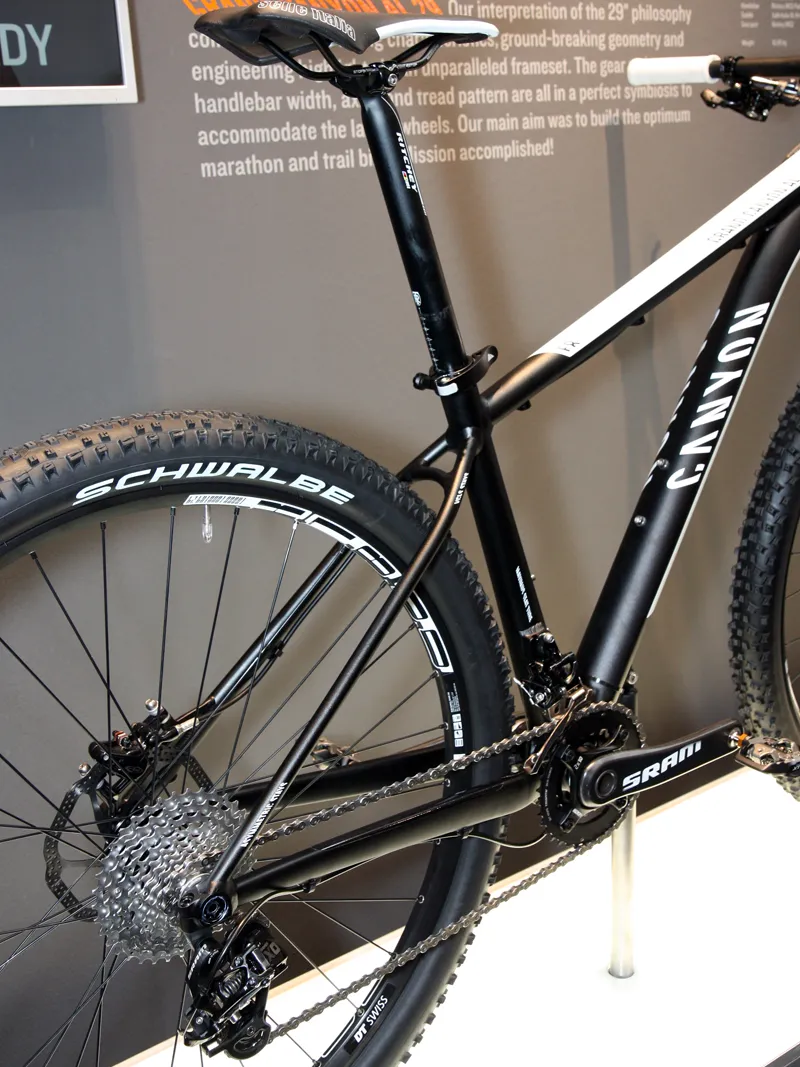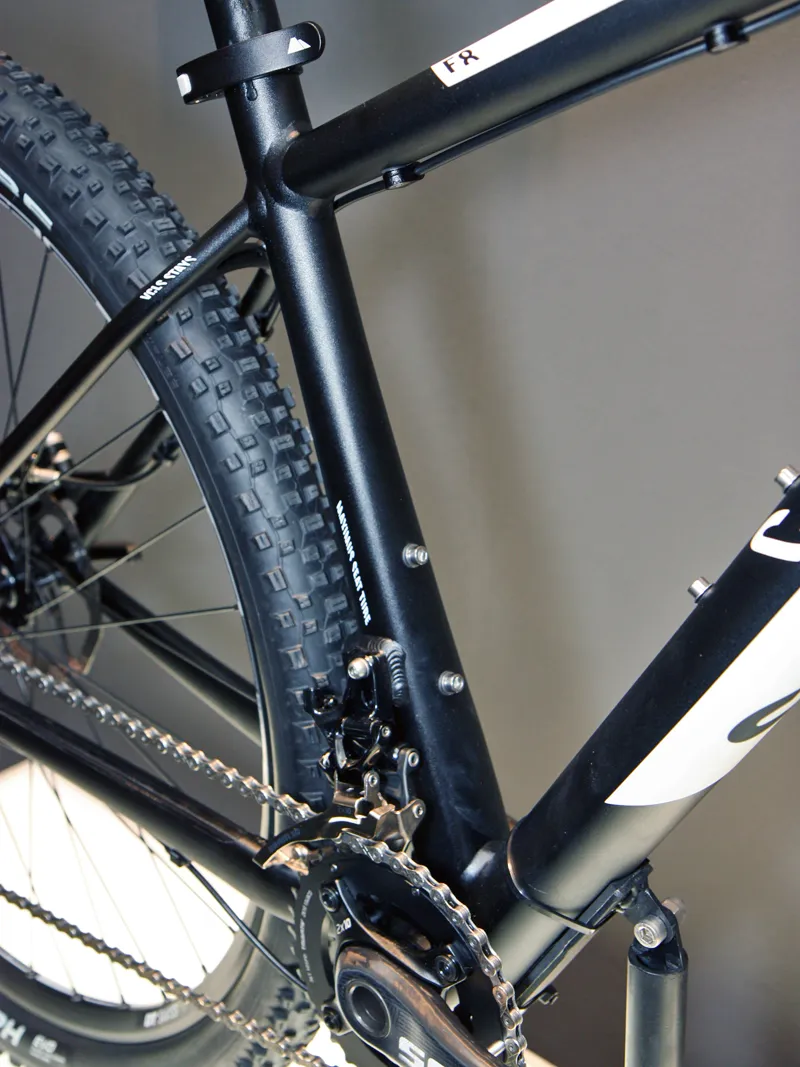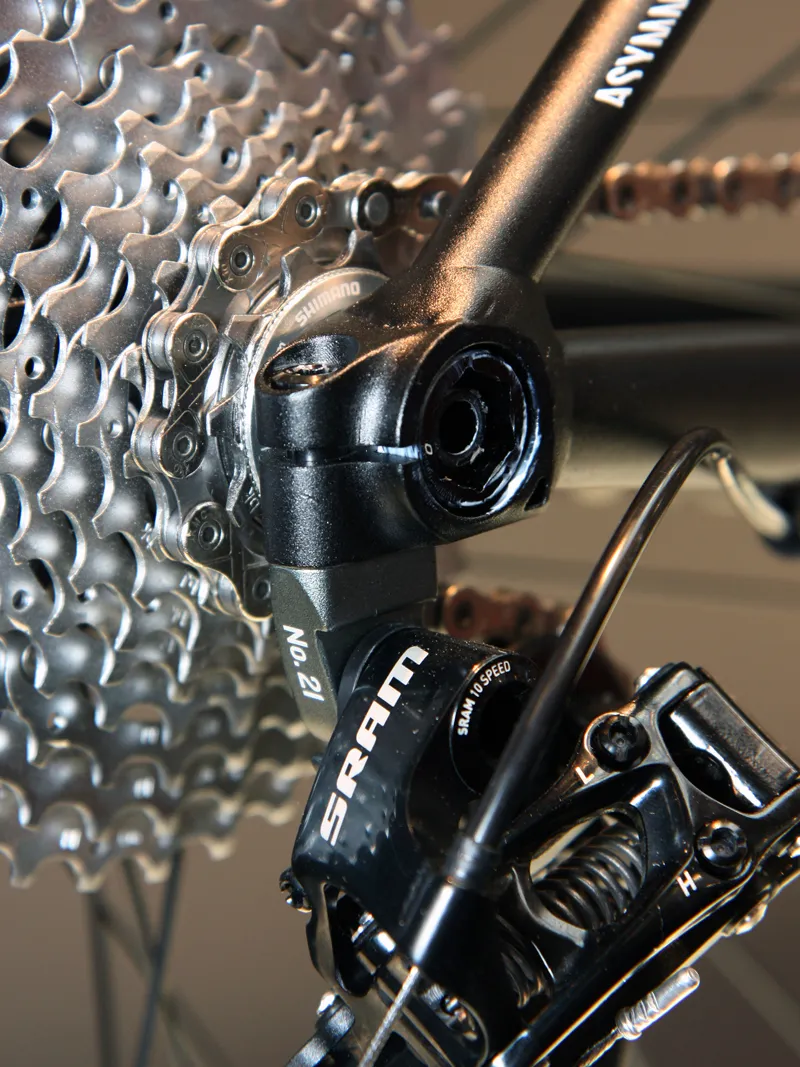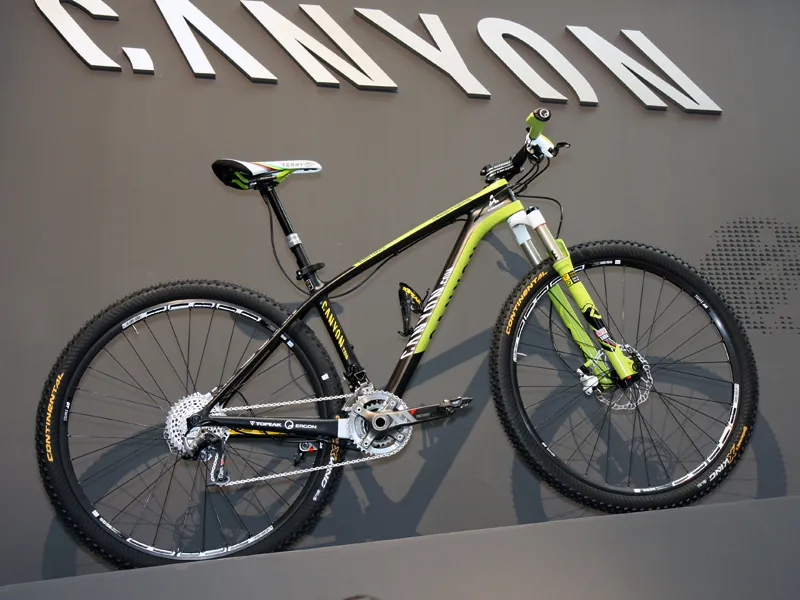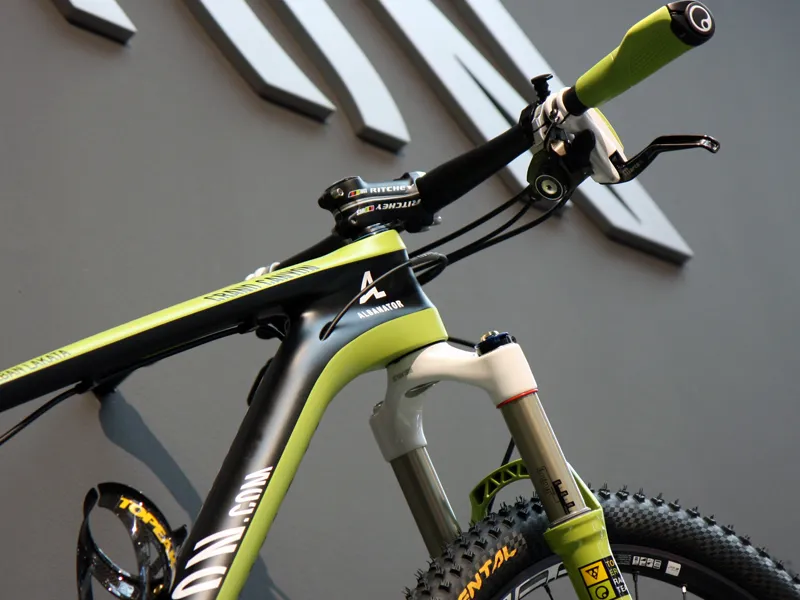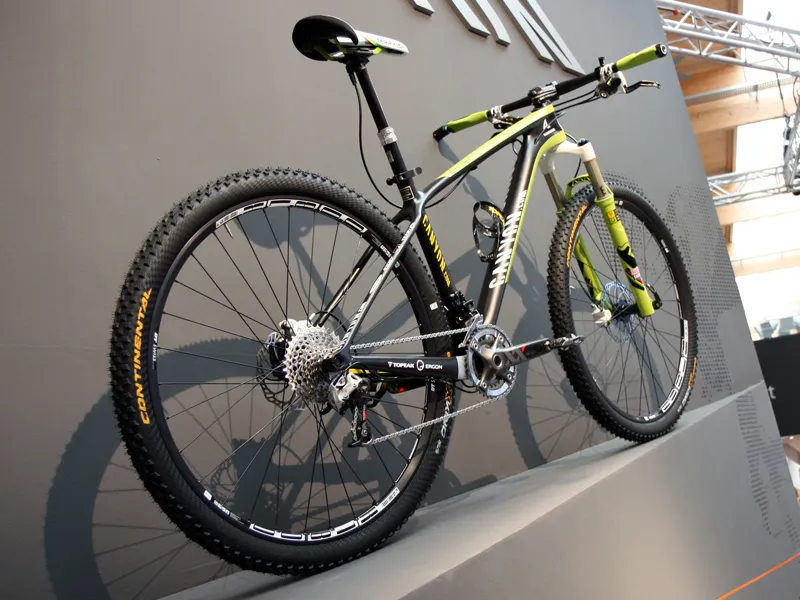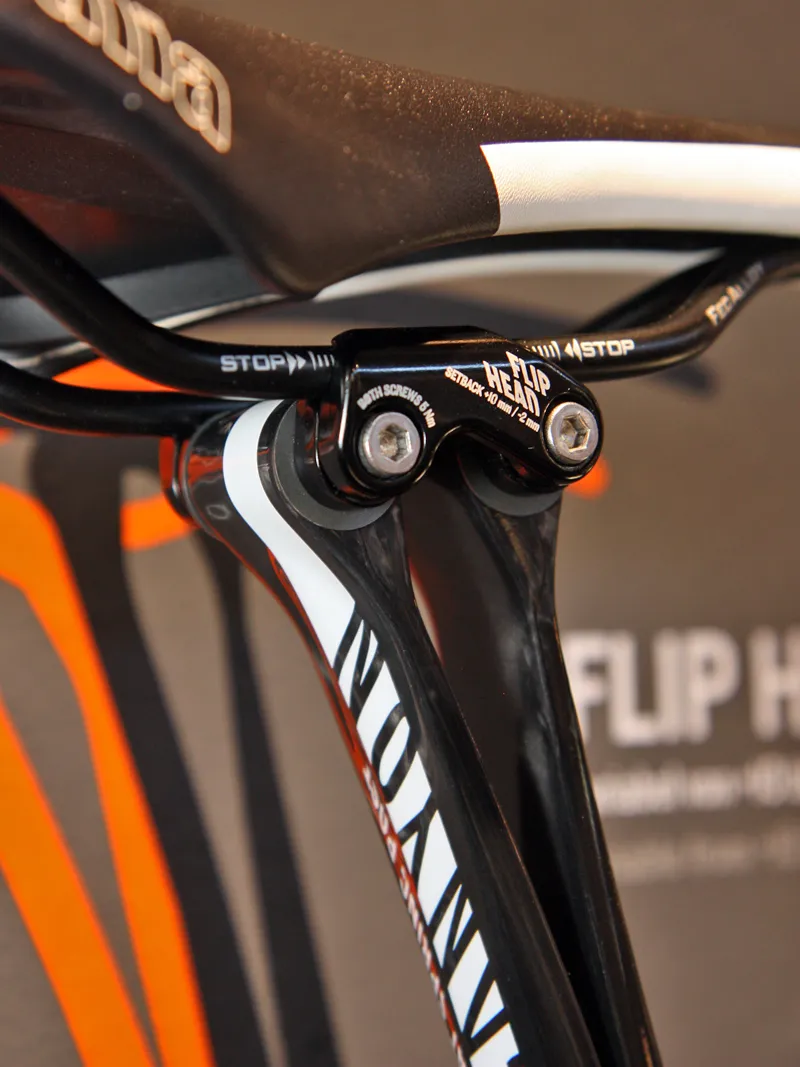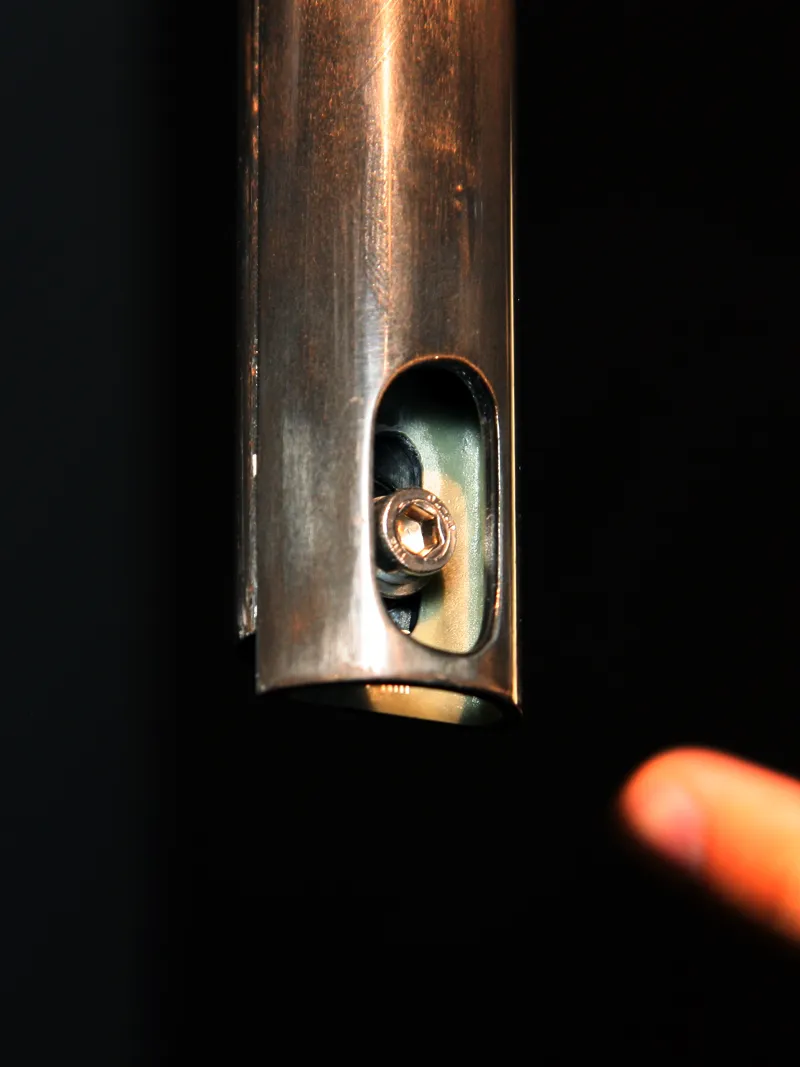German online retailers Canyon have wholly revamped their value-oriented Ultimate Al road platform for 2012. Weight has dropped to 1,220g (claimed) but stiffness and ride quality look to have been improved as well.
The now hydroformed and shapelier down tube is wider at the bottom bracket and taller at the head tube, the asymmetrical Maximus seat tube gets a new round-to-rectangular profile and press-fit bottom bracket cups replace the older model's traditional threaded fittings.
Fully internal cable routing plus a new Shimano Di2-specific version with a chainstay-mounted battery will provide a cleaner appearance along with more consistent mechanical shifting performance in inclement weather.
In addition to the stock models, Canyon will produce a limited run – just 100 samples – of Ultimate Al 9.0 Di2 complete bikes that feature a raw brushed finish and special orange decals.
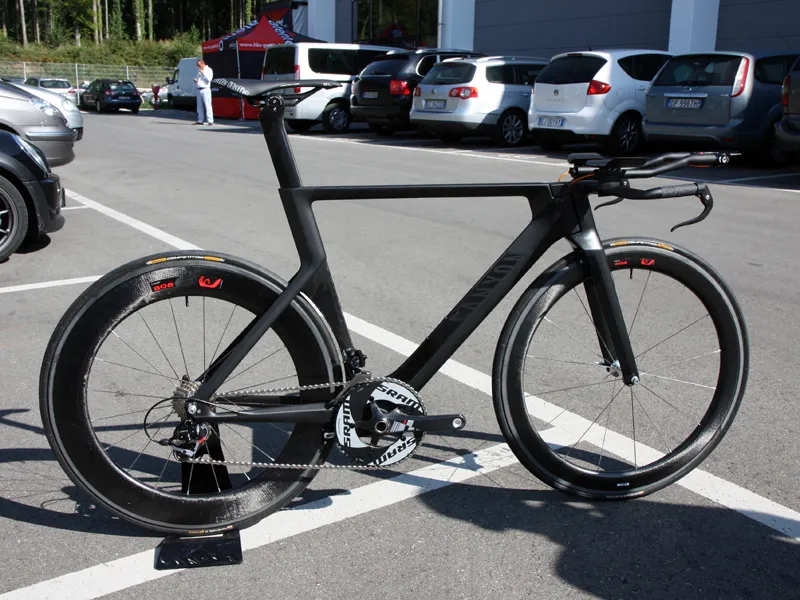
The Canyon Speedmax CF
At Eurobike, Canyon also provided BikeRadar with a closer look at their new Speedmax CF prototype, which we first saw hiding in a company van at this year's Tour de France. Canyon say it likely won't be available to consumers until the 2013 model year but the preview is definitely striking.
Gone is the current Speedmax CF's gently curving shape for a more angular design that's claimed to be more aerodynamic in the wind tunnel. As is becoming practically standard issue for full-blown time trial bikes these days, the new Speedmax CF also gets an external-steerer fork, fully integrated center-pull brakes (the front is hidden at the back of the fork crown and the rear brake is tucked into an enclosure behind the bottom bracket), a proprietary integrated aero bar, a stem that sits inline with the top tube, and fully internal cable routing.
Rear entry dropouts allow for a very tight gap between the rear wheel and profiled seat tube, the proprietary seatpost works with either standard rails or Selle Italia's Monolink system, and press-fit bottom bracket cups are used here as well.
Two new mountain bikes for 2012 – one with lots of travel, the other with none
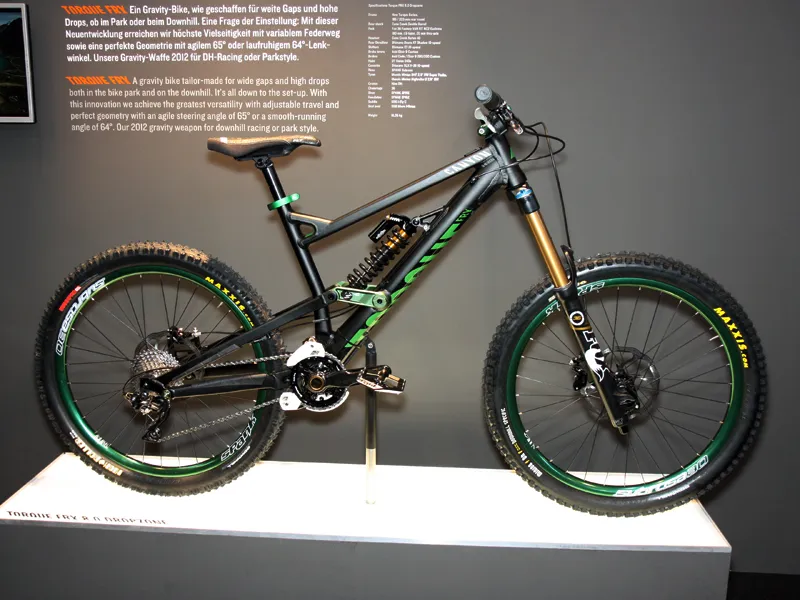
Canyon Torque FRX
Canyon expand on their Torque range of long-travel mountain bikes with the introduction of a new Torque FRX platform aimed at lift-served park riders and downhillers. The beefy alloy frame is designed around a single or dual crown fork and the true four-bar rear suspension can be set at either 185 or 203mm of travel – making for a versatile machine, especially when combined with the adjustable geometry that can be switched between a 64 or 65-degree head tube angle.
Other features include 142x12mm through-axle rear dropouts, post mount rear disc tabs, a built-in sag meter, internal cable routing to accommodate the latest generation of dropper seatposts, a tapered head tube, and Cane Creek's highly adjustable Double Barrel coil-over shock as standard equipment.
Sitting at the other end of the spectrum is the all-new Grand Canyon Al 29er hardtail – Canyon's first production foray into the big-wheel market. Key features include a giant curved down tube, an extra-wide bottom bracket shell with press-fit bearing cups, a round-to-rectangular profile Maximus asymmetrical seat tube, an extra-short tapered head tube to retain a more reasonable cockpit height, internal derailleur cable routing, a direct-mount front derailleur, tiny seatstays, and – somewhat surprisingly – a 142x12mm through-axle rear end.
Canyon say the new 29er will be available starting in December and a carbon fiber model will eventually follow – probably as a 2013 model. But in any case, US buyers will still have to wait a while longer yet for any of Canyon's bikes to be properly imported for sale. While a potential deal was apparently in the works with a US-based online retailer, we've been told those plans have been pushed back another season while the two parties continue to work out the complicated logistics.
And now for something completely different
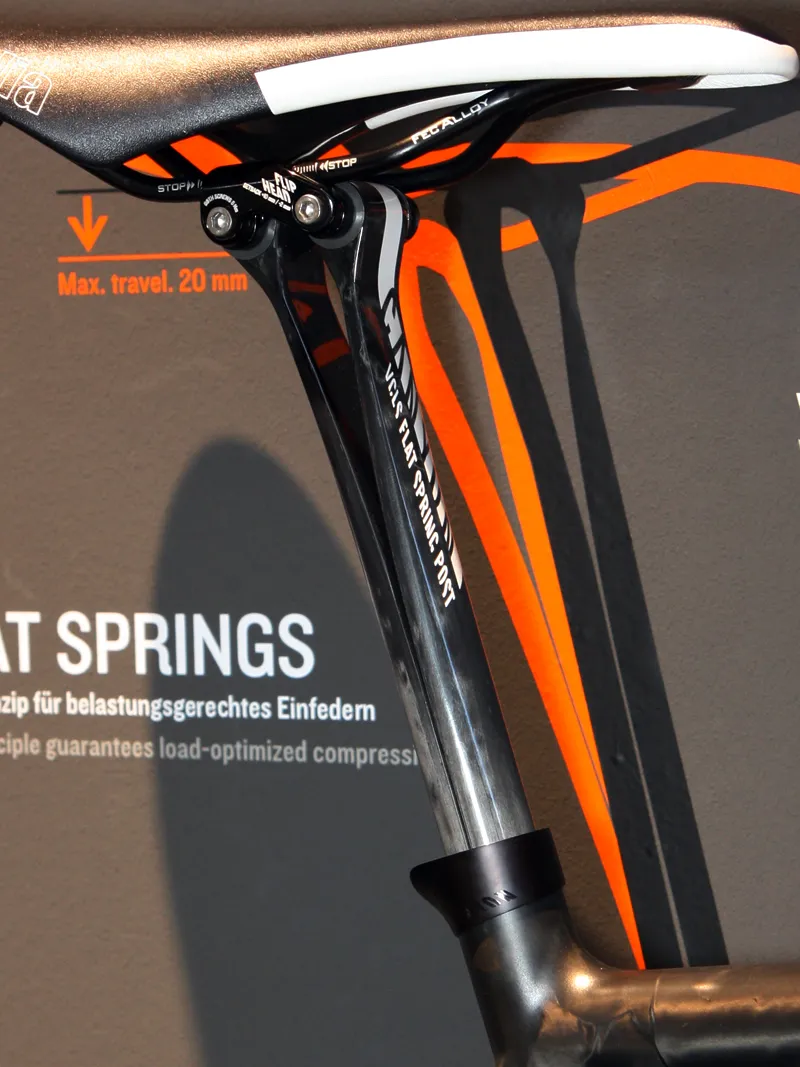
A new and ingenious carbon seatpost
One of the most interesting things in the Canyon booth wasn't a frame or bike at all but rather an ingenious carbon fiber seatpost. The new VCLS Flat Spring Post is actually two separate semicircular carbon fiber shafts that are joined up top with a extremely low-profile pivoting head but otherwise free to slide against each other.
Tilt adjustments are done by hand – just undo the seatpost collar, manually tilt the seat, then retighten – while independent fore-aft adjustments can be made by loosening a pair of easily accessed bolts. The head can also be flipped around to provide different degrees of offset.
That unique split, flat-profile carbon fiber construction is also said to be remarkably flexible under load, offering as much as 20mm of movement, according to Canyon, for a noticeable bump in comfort even as compared to the company's current VCLS seatpost model.
It's also still very light despite the movement at a claimed 190g. Canyon won't have the new seatpost ready for sale until sometime in 2012 but it'll be approved for both road and mountain bike use whenever that day comes.
